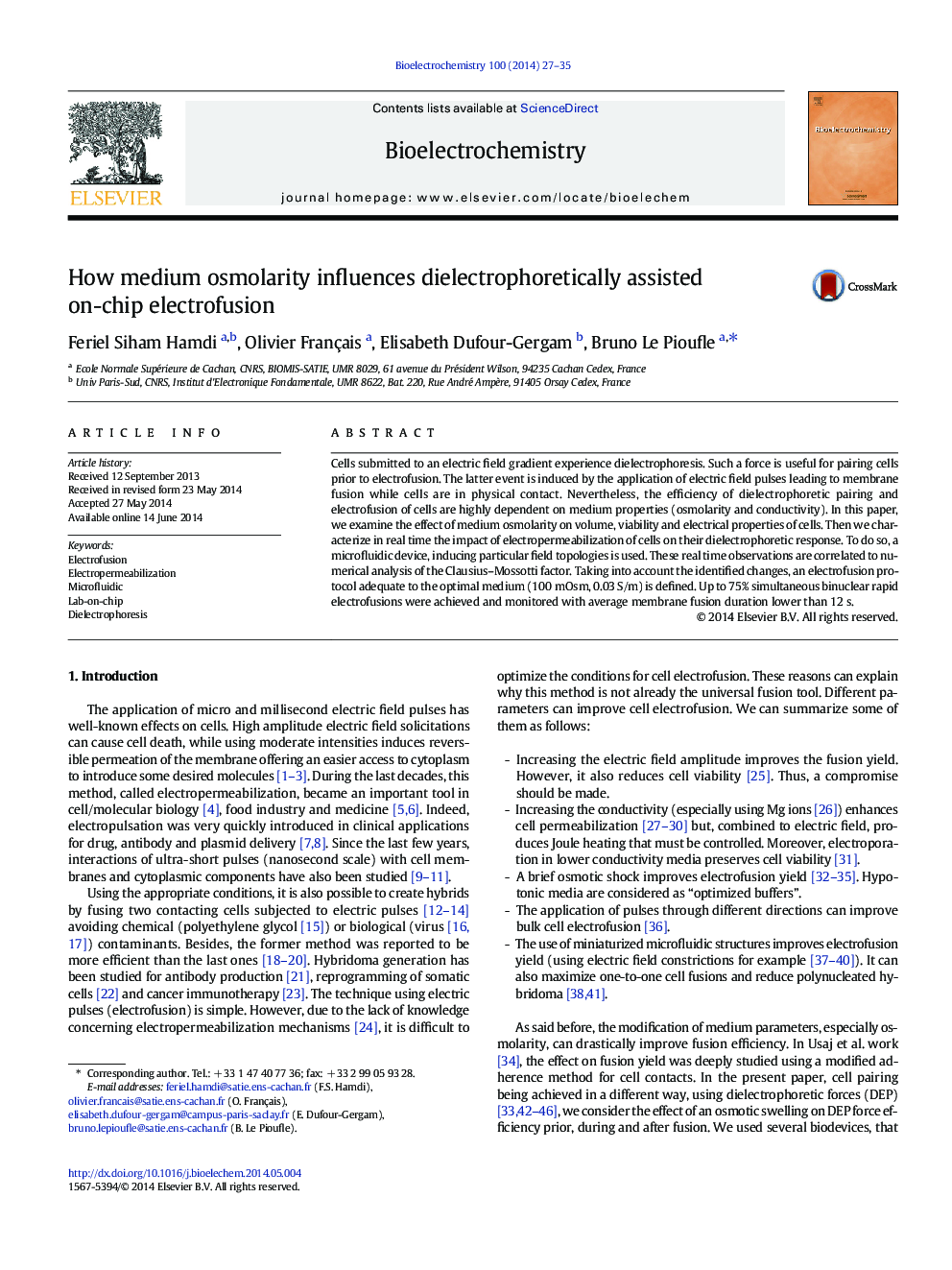| Article ID | Journal | Published Year | Pages | File Type |
|---|---|---|---|---|
| 1268088 | Bioelectrochemistry | 2014 | 9 Pages |
•Cell electrical/mechanical properties are dependent on medium osmolarity.•Dielectrophoretic force acting on a cell is related to its permeabilization level.•Permeabilized and electrofused cells respond to negative dielectrophoretic force.•The efficiency of DEP assisted electrofusion is influenced by medium osmolarity.•Up to 75% of simultaneous binuclear electrofusions on a chip were achieved.
Cells submitted to an electric field gradient experience dielectrophoresis. Such a force is useful for pairing cells prior to electrofusion. The latter event is induced by the application of electric field pulses leading to membrane fusion while cells are in physical contact. Nevertheless, the efficiency of dielectrophoretic pairing and electrofusion of cells are highly dependent on medium properties (osmolarity and conductivity). In this paper, we examine the effect of medium osmolarity on volume, viability and electrical properties of cells. Then we characterize in real time the impact of electropermeabilization of cells on their dielectrophoretic response. To do so, a microfluidic device, inducing particular field topologies is used. These real time observations are correlated to numerical analysis of the Clausius–Mossotti factor. Taking into account the identified changes, an electrofusion protocol adequate to the optimal medium (100 mOsm, 0.03 S/m) is defined. Up to 75% simultaneous binuclear rapid electrofusions were achieved and monitored with average membrane fusion duration lower than 12 s.
